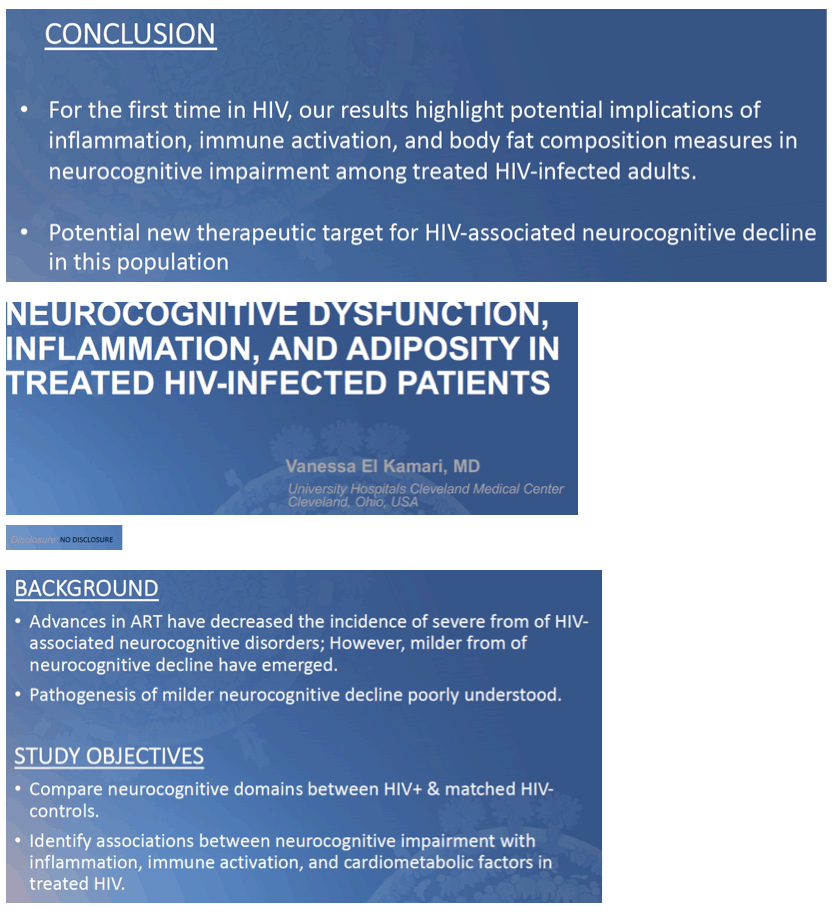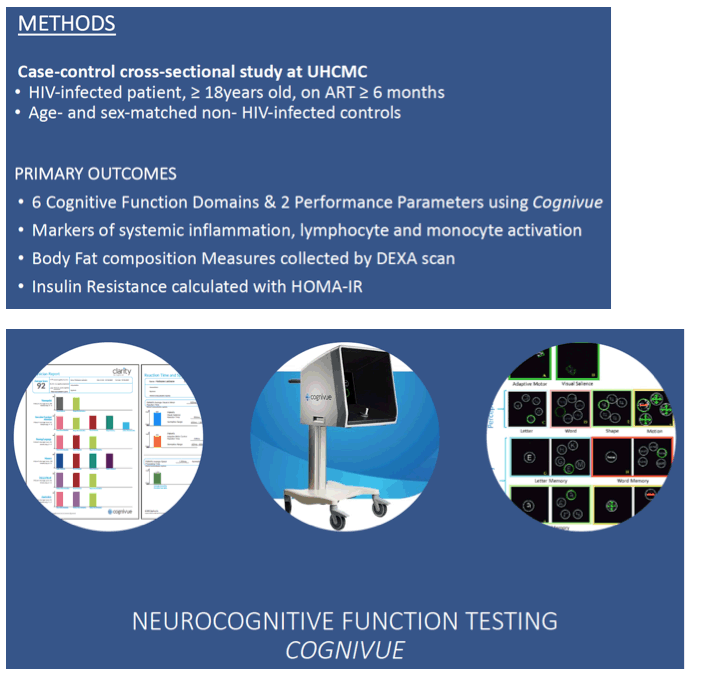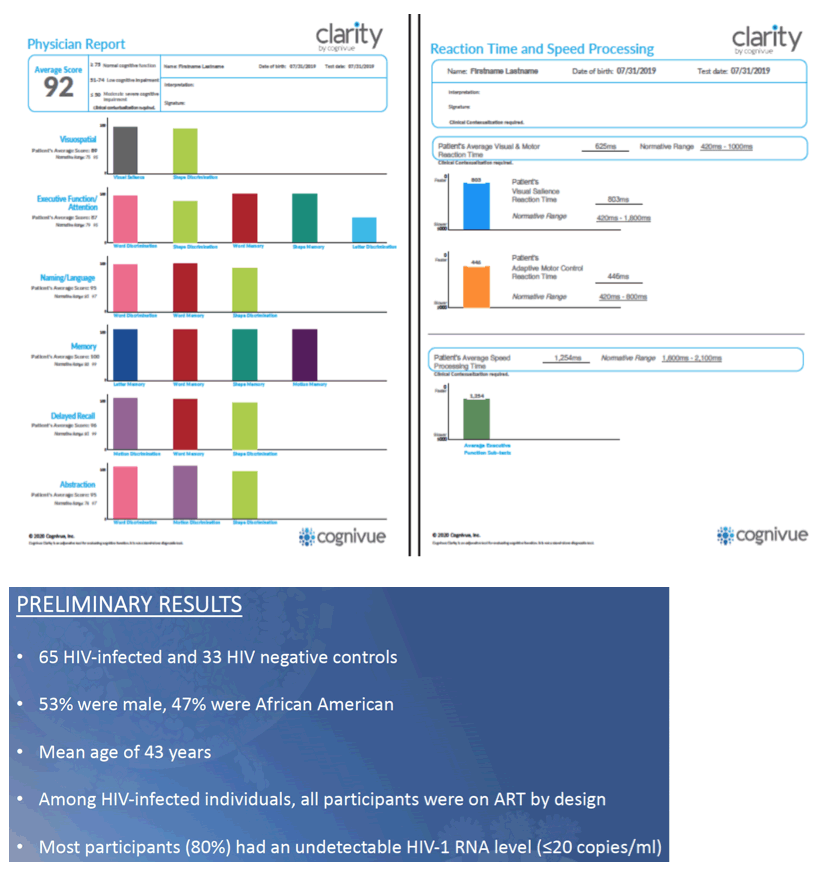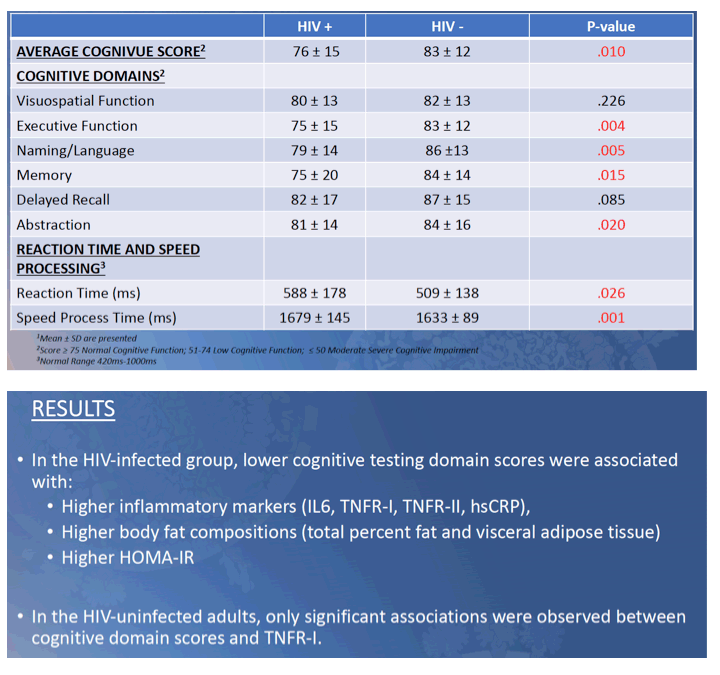 |
 |
 |
| |
NEUROCOGNITIVE DYSFUNCTION, INFLAMMATION, AND ADIPOSITY IN TREATED HIV PATIENTS
|
| |
| |
CROI 2021 March 6-10 Reported by Jules Levin
Vanessa E . El Kamari1, Corrilynn O. Hileman2, Danielle Labbato1, Julia Kosco1, Grace A. McComsey1
1University Hospitals Cleveland Medical Center, Cleveland, OH, USA, 2MetroHealth Medical Center, Cleveland, OH, USA
Background: The advances in ART have decreased the incidence of the severe form of HIV-associated neurocognitive disorders; however, milder impairment have emerged. The pathogenesis of this milder form of neurocognitive decline remains poorly understood.
Methods: This is a cross-sectional study involving 65 HIV+ and 33 matched HIV - controls recruited at University Hospitals Cleveland Medical Center. For the first time in HIV, we used cognivue, an FDA-approved computer-based test. This test was approved for identifying potential decline in cognitive function and is calibrated to an individual's unique cognitive ability. Six cognitive testing domains(visuospatial, memory, executive function, naming/language, delayed recall, and abstraction) and two performance parameters (speed processing and reaction time)were measured. Markers of inflammation, immune activation, insulin resistance, and body fat composition(by DEXA scan)were collected. Classical t-test, chi-square tests, and spearman correlations were used to compare and explore relationships between variables.
Results: Overall, 53% were male, 47% were African American, with a mean age of 43 years. Among HIV + individuals, all were on ART by design and 80% had an undetectable HIV-1 RNA level (≤20 copies/ml).
Compared to controls, HIV+ participants had a lower overall cognitive score (76% vs 83%, p=0.01), and performed poorer across different cognitive domains [visuospatial, memory, executive function, naming/language, delayed recall, and abstraction, (all p<0.05)].
In performance testing domains, HIV+ participants had significantly longer adaptive motor control reaction time (mean 588+/-178ms vs 509+/-138 ms, p<0.05) and processing speed time (1679+/-145ms vs 1633+/-89 ms, p<0.05). However, there were no significant differences in the visual salience reaction time between the two groups (p=0.3).
In the HIV+ group, lower cognitive testing domain scores were associated with higher inflammatory markers(IL6, TNFR-I, TNFR-II, hsCRP), and with higher body fat compositions (total percent fat and visceral adipose tissue). On the other hand, only significant associations were observed between cognitive domain scores and TNFR-I in HIV-controls.
Conclusion: For the first time in HIV, our results highlight the potential implications of inflammation, immune activation, and body fat composition measures in neurocognitive impairment among HIV-infected adults, suggesting a potential new therapeutic target for HIV-associated neurocognitive decline in this population.
These results are preliminary, additional participants are being recruited.




|
| |
|
 |
 |
|
|